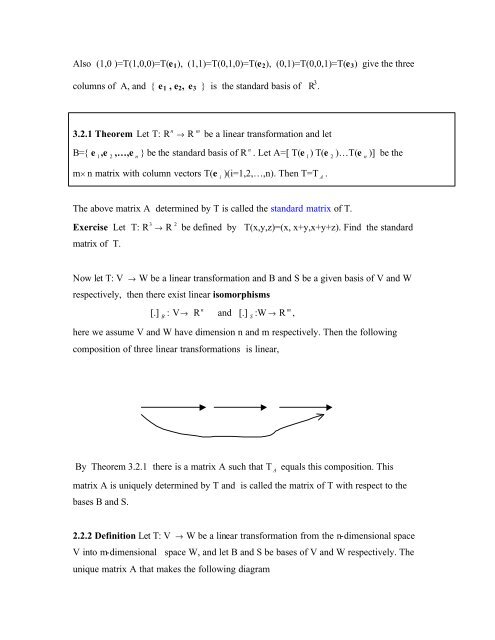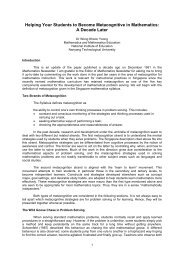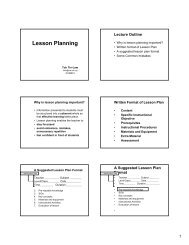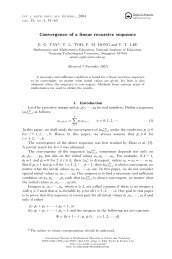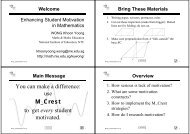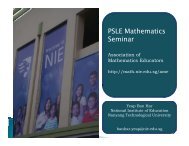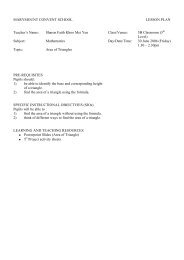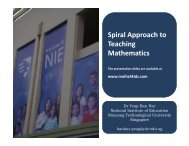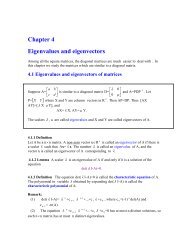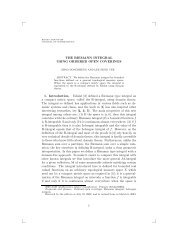Chapter 3 Linear transformations
Chapter 3 Linear transformations
Chapter 3 Linear transformations
You also want an ePaper? Increase the reach of your titles
YUMPU automatically turns print PDFs into web optimized ePapers that Google loves.
Also (1,0 )=T(1,0,0)=T(e 1 ), (1,1)=T(0,1,0)=T(e 2 ), (0,1)=T(0,0,1)=T(e 3 ) give the threecolumns of A, and { e 1 , e 2 , e 3 } is the standard basis of R 3 .3.2.1 Theorem Let T: R n → R m be a linear transformation and letB={ e 1,e 2,…,e n} be the standard basis of R n . Let A=[ T(e 1) T(e 2)…T(e n)] be them× n matrix with column vectors T(e i)(i=1,2,…,n). Then T=T A.The above matrix A determined by T is called the standard matrix of T.Exercise Let T: R 3 → R 2matrix of T.be defined by T(x,y,z)=(x, x+y,x+y+z). Find the standardNow let T: V → W be a linear transformation and B and S be a given basis of V and Wrespectively, then there exist linear isomorphisms[.] B: V→ R n and [.] S:W → R m ,here we assume V and W have dimension n and m respectively. Then the followingcomposition of three linear <strong>transformations</strong> is linear,R n −1[.] BV T W [.] SR m .By Theorem 3.2.1 there is a matrix A such that T Aequals this composition. Thismatrix A is uniquely determined by T and is called the matrix of T with respect to thebases B and S.2.2.2 Definition Let T: V → W be a linear transformation from the n-dimensional spaceV into m-dimensional space W, and let B and S be bases of V and W respectively. Theunique matrix A that makes the following diagram


